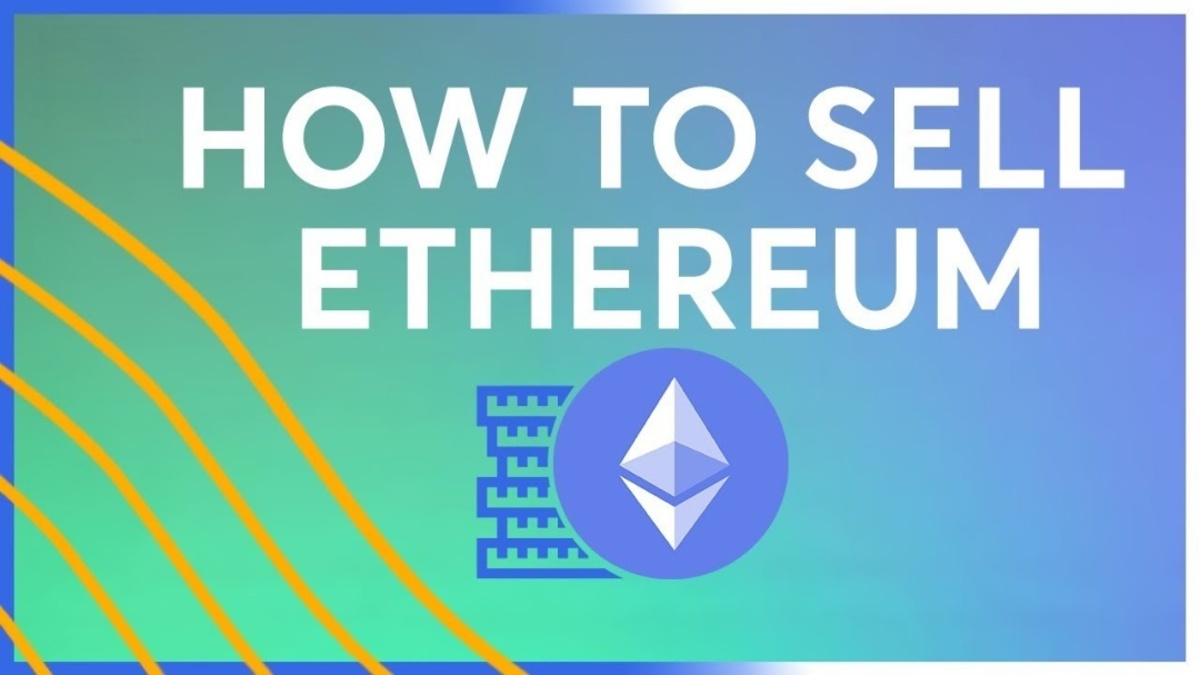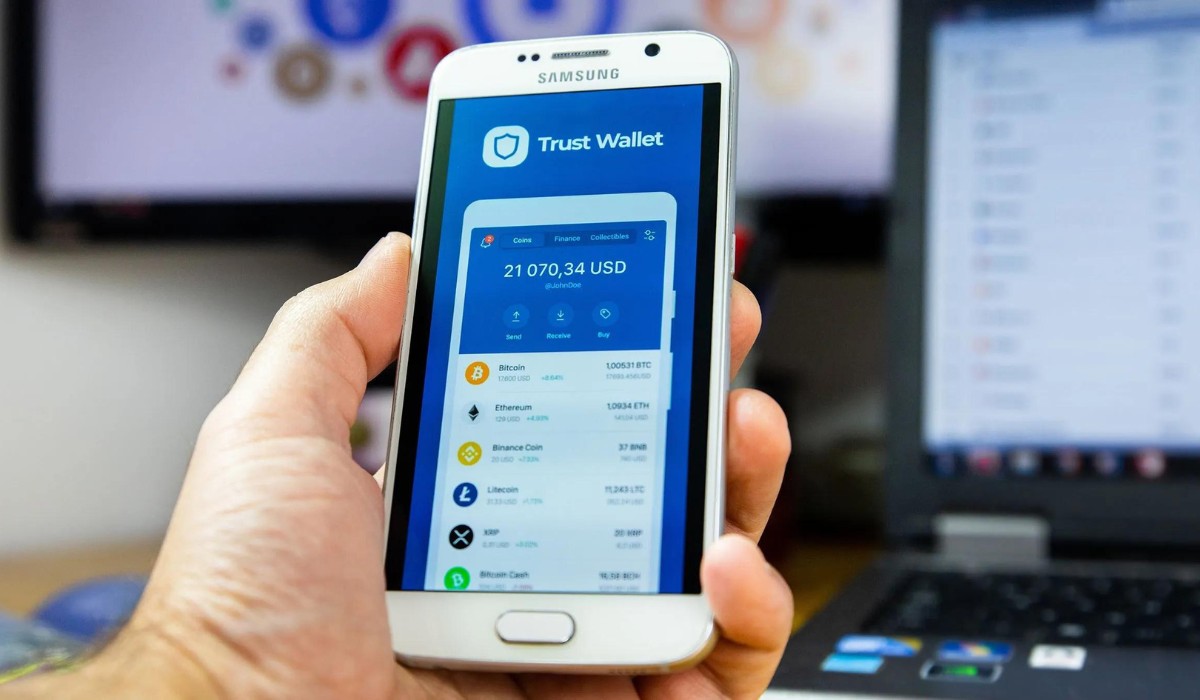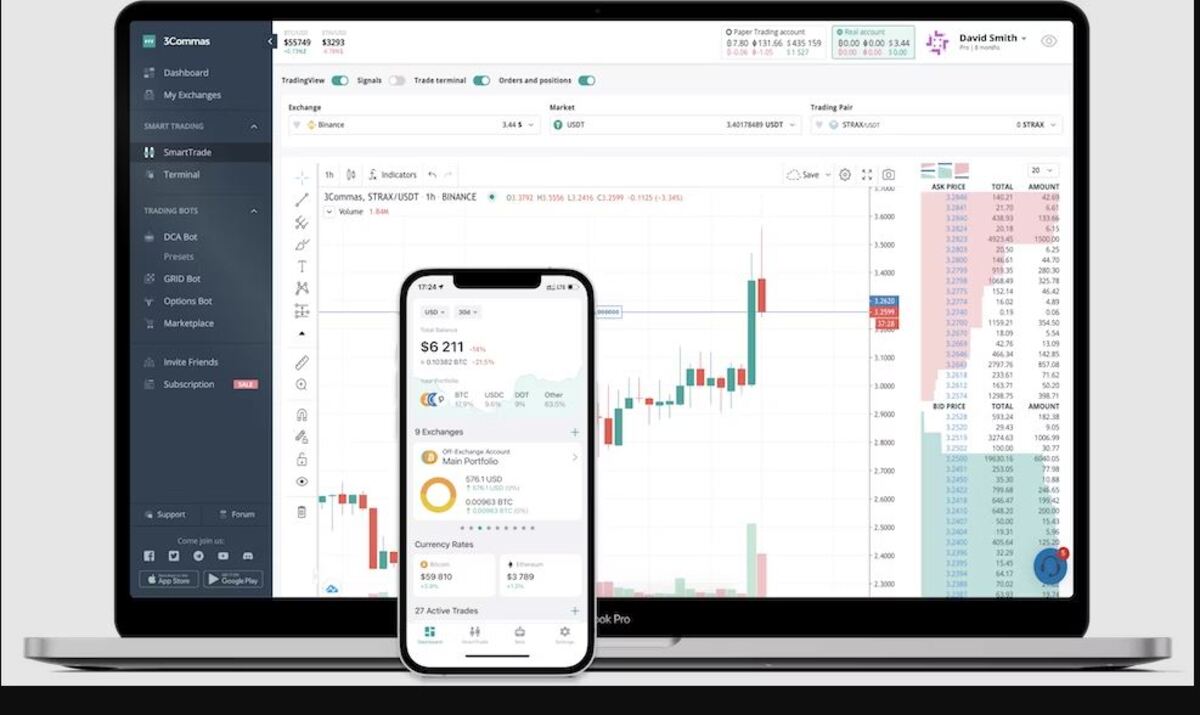Introduction
Welcome to the world of cryptocurrency trading! If you’re curious about how to sell Ethereum, you’ve come to the right place. Ethereum is one of the most popular cryptocurrencies, and as a savvy investor, it’s important to understand how to navigate the process of selling it in order to capitalize on potential profits.
Ethereum, often referred to as Ether or ETH, is a decentralized digital currency that operates on blockchain technology. It was created in 2015 by Vitalik Buterin with the goal of enabling developers to build and deploy smart contracts and decentralized applications (DApps).
Before diving into how to sell Ethereum, it’s essential to understand the benefits of doing so. Selling Ethereum allows you to convert your investment back into a traditional currency such as USD or EUR, providing you with the liquidity to utilize the funds for various purposes, including reinvestment, paying bills, or making purchases.
To sell Ethereum, you’ll need a cryptocurrency exchange platform. These platforms act as intermediaries that facilitate the buying and selling of cryptocurrencies, including Ethereum. Choosing a reputable exchange is crucial to ensure a secure and seamless selling experience.
In this guide, we’ll walk you through the step-by-step process of selling Ethereum. We’ll cover everything from choosing a cryptocurrency exchange platform and creating an account, to verifying your identity, depositing Ethereum, placing a sell order, and finally, withdrawing your funds.
It’s worth noting that the specific steps may vary slightly depending on the exchange platform you choose, but the general process remains relatively consistent.
Whether you’re an experienced investor or a newcomer to the world of cryptocurrency, this guide will provide you with the knowledge and confidence to sell Ethereum and navigate the exciting world of digital currency trading. So, let’s get started!
What is Ethereum?
Ethereum is a decentralized blockchain platform that enables developers to build and deploy smart contracts and decentralized applications (DApps). It was created in 2015 by the visionary programmer Vitalik Buterin.
Unlike Bitcoin, which is primarily used as a digital currency, Ethereum serves as a platform for executing smart contracts. Smart contracts are self-executing agreements with predefined rules and conditions. Once the conditions are met, the contract automatically carries out the agreed-upon actions.
This capability makes Ethereum a powerful tool for a wide range of applications. It allows developers to create and operate DApps across various industries, such as finance, supply chain management, gaming, and more.
One of the main features that sets Ethereum apart is its native cryptocurrency, Ether (ETH). Ether is used to power the Ethereum network and enable transactions to take place. It serves as both a medium of exchange and a reward mechanism for miners who participate in securing the network.
Ethereum’s blockchain technology provides a secure and transparent platform for conducting transactions and executing smart contracts. The blockchain acts as a decentralized ledger that records all the transactions and activities performed on the network. This eliminates the need for intermediaries, reduces costs, and enhances security.
Ethereum also introduced the concept of ERC-20 tokens, which are tokens that adhere to a specific set of standards on the Ethereum platform. These tokens have become synonymous with the wave of Initial Coin Offerings (ICOs) that emerged in recent years as a means for startups to raise funds.
Moreover, Ethereum is constantly evolving. The Ethereum community regularly proposes and implements upgrades to the network to improve its scalability, security, and functionality. One major upgrade is Ethereum 2.0, which aims to transition the network from a proof-of-work (PoW) consensus mechanism to a proof-of-stake (PoS) mechanism, making it more efficient and environmentally friendly.
Overall, Ethereum has revolutionized the blockchain industry by introducing a platform that goes beyond digital currency. Its versatility, security, and potential for innovation make it a promising technology with various real-world applications.
How to Sell Ethereum
If you’re looking to sell your Ethereum holdings, follow these step-by-step instructions to ensure a smooth and successful transaction:
Step 1: Choose a Cryptocurrency Exchange
The first step in selling Ethereum is selecting a reputable cryptocurrency exchange. There are numerous exchanges to choose from, each with its own features, fees, and security measures. Some popular options include Coinbase, Binance, Kraken, and Gemini. Do your research and choose an exchange that best fits your needs.
Step 2: Create an Account
Once you’ve selected an exchange, you’ll need to create an account. This typically involves providing your email address, creating a password, and agreeing to the exchange’s terms and conditions. Follow the instructions provided by the exchange to set up your account.
Step 3: Set up 2-Factor Authentication
To enhance the security of your account, enable 2-factor authentication (2FA). This adds an extra layer of protection by requiring a second verification method, such as a code sent to your mobile device, in addition to your password. It’s an essential step to safeguard your funds from unauthorized access.
Step 4: Verify Your Identity
Many cryptocurrency exchanges require users to verify their identity before conducting transactions. This typically involves providing a copy of your government-issued ID, proof of address, and in some cases, a selfie or other form of identification. Follow the exchange’s instructions to complete the verification process.
Step 5: Deposit Ethereum into Your Account
Now it’s time to deposit your Ethereum into your exchange account. Navigate to the deposit section of the exchange and locate the Ethereum wallet address provided by the platform. Copy this address and use it to transfer your Ethereum from your personal wallet to the exchange.
Step 6: Place a Sell Order
Once your Ethereum is successfully deposited into your exchange account, navigate to the trading section and locate the sell order form. Specify the amount of Ethereum you want to sell and choose the currency you wish to receive in exchange, such as USD or EUR. Review the order details and confirm before proceeding.
Step 7: Confirm the Transaction
Before the sell order is executed, you’ll typically be asked to review and confirm the transaction details, including the amount of Ethereum being sold, the exchange rate, and any associated fees. Take the time to double-check these details before confirming the transaction.
Step 8: Withdraw Your Funds
Once your sell order is complete, the proceeds from the transaction will be credited to your account in the currency of your choice. It’s now time to withdraw your funds from the exchange. Locate the withdrawal section, specify the amount you want to withdraw, and provide the external wallet address or bank account details where you want to receive the funds.
It’s important to note that withdrawal fees and processing times may vary depending on the exchange and the payment method you choose. Be mindful of these factors and plan accordingly.
Congratulations! You’ve successfully sold your Ethereum and withdrawn your funds. You can now utilize the proceeds for various purposes, whether it’s reinvesting in other cryptocurrencies or using the funds for everyday expenses.
Remember to always exercise caution when trading cryptocurrencies and to keep your private keys and account information secure. Stay informed about market trends, and consider consulting with a financial advisor if needed.
Step 1: Choose a Cryptocurrency Exchange
When it comes to selling Ethereum, the first important step is selecting a reliable and reputable cryptocurrency exchange. With numerous exchanges available, it’s essential to do thorough research to ensure you choose a platform that meets your needs in terms of security, user experience, fees, and available trading pairs.
Here are some factors to consider when choosing a cryptocurrency exchange:
Reputation and Security: Look for exchanges that have a solid reputation and a track record of prioritizing security measures. Read reviews, conduct background checks, and verify whether the exchange has experienced any security breaches in the past. Choose an exchange that implements strong security protocols, such as two-factor authentication (2FA) and cold wallet storage.
User-Friendly Interface: Opt for an exchange with a user-friendly interface that makes it easy to navigate and understand the trading process. A well-designed and intuitive platform can significantly enhance your trading experience.
Liquidity: Consider the exchange’s liquidity, which refers to the availability of buyers and sellers in the market. Higher liquidity means you can buy or sell Ethereum quickly and at the desired price. An exchange with higher trading volumes generally offers better liquidity.
Supported Countries and Verification Process: Check whether the exchange is available in your country and supports users from your jurisdiction. Additionally, review the verification process required to open an account. Some exchanges require more extensive verification, such as submitting identification documents, while others may have lower verification requirements for smaller withdrawal limits.
Available Trading Pairs: Ensure the exchange offers the trading pairs you desire. For example, if you plan to sell Ethereum for a specific fiat currency, such as USD or EUR, make sure the exchange supports that trading pair.
Transaction Fees: Take into account the fees charged by the exchange for trading and withdrawals. Different exchanges have different fee structures, so compare the fees across various platforms to find one that aligns with your budget and trading strategy.
Customer Support: Consider the customer support options provided by the exchange. Look for platforms that offer responsive customer support through various channels, such as live chat, email, or phone, in case you encounter any issues during the selling process.
By carefully evaluating these factors, you can choose a cryptocurrency exchange that best suits your trading requirements. Remember to create accounts on reputable and well-established exchanges to minimize the risk of fraudulent activities or hacks.
Once you’ve chosen an exchange, you can proceed to the next steps of selling Ethereum, which include creating an account, setting up 2-factor authentication, and verifying your identity. These steps will ensure that your account is secure and compliant with the exchange’s regulations.
Now that you understand the importance of selecting a cryptocurrency exchange let’s move on to the next step: creating an account and setting up 2-factor authentication.
Step 2: Create an Account
After deciding on a suitable cryptocurrency exchange, the next step in selling Ethereum is to create an account on the chosen platform. Creating an account is typically straightforward and involves a few simple steps:
1. Visit the Exchange Website: Open your web browser and navigate to the official website of the cryptocurrency exchange you have selected.
2. Sign Up or Register: Look out for options such as “Sign Up” or “Register” on the exchange’s homepage. Click on the appropriate button to begin the account creation process.
3. Provide Your Email Address: Enter a valid email address that you have access to. This email will be used for account-related communications and to verify your identity during the registration process.
4. Create a Strong Password: Choose a strong and unique password for your account. It is crucial to select a password that is not easily guessable and includes a combination of letters, numbers, and special symbols.
5. Agree to the Terms and Conditions: Carefully read the terms and conditions provided by the exchange. If you agree to abide by their policies and terms, check the box or click the checkbox to indicate your consent.
6. Complete the Human Verification: In order to prevent automated bots from creating accounts, some exchanges may require you to complete a simple human verification process. This usually involves solving a captcha or selecting specific images as instructed.
7. Submit Your Registration: Once you have filled in all the necessary information and completed the human verification process, click on the “Register” or “Sign Up” button to submit your registration.
8. Verify Your Email Address: Check the email address you provided during the registration process. You should receive an email from the exchange with a verification link. Click on the verification link to verify your email address and activate your account.
It is essential to follow the instructions provided by the exchange accurately to ensure the successful creation of your account. In case you do not receive the verification email, check your spam or junk folder, or consider requesting a resend from the exchange.
Upon completing these steps, you will have successfully created an account on the cryptocurrency exchange. However, keep in mind that some exchanges may have additional security measures in place, such as setting up two-factor authentication (2FA), which adds an extra layer of protection to your account.
Now that you have your account set up, the next step is to configure 2FA to enhance the security of your account and protect your assets. This will be covered in the following step.
Step 3: Set up 2-Factor Authentication
One of the essential security measures to protect your cryptocurrency exchange account is setting up two-factor authentication (2FA). This additional layer of security helps to verify your identity during the login process, reducing the risk of unauthorized access. Follow these steps to set up 2FA on your chosen cryptocurrency exchange:
1. Access Your Account Settings: Login to your newly created exchange account and navigate to the account or security settings section. Look for options related to two-factor authentication or 2FA.
2. Choose an Authenticator App: Select an authenticator app from the list recommended by the exchange or use a popular choice such as Google Authenticator or Authy. These apps generate temporary verification codes that you’ll need to enter during the login process.
3. Install the Authenticator App: Download the authenticator app onto your mobile device or computer from the official app store or website. Once installed, open the app and proceed to the next step.
4. Scan the QR Code: Within the authenticator app, scan the QR code displayed on the exchange’s website. This QR code establishes a secure connection between the app and your exchange account.
5. Enter the Verification Code: After scanning the QR code, the authenticator app will display a verification code. Enter this code into the appropriate field on the exchange’s website to verify the connection between the app and your account.
6. Store Backup Codes: Some exchanges provide backup codes that can be used if you lose access to your authenticator app. Store these codes in a safe place, such as a password manager or offline storage, as they can be crucial for account recovery.
7. Enable 2FA: Once you have completed the steps above, enable 2-factor authentication by following the instructions provided by the exchange. This usually involves toggling a switch or clicking an “enable” button in your account settings.
8. Test 2FA: To ensure that 2FA is working correctly, log out of your account and attempt to log back in. During the login process, the exchange will prompt you to enter a verification code from your authenticator app. Enter the code to successfully log in.
Setting up 2FA provides an additional layer of security to protect your exchange account. It significantly reduces the risk of unauthorized access, even if your username and password are compromised.
Remember to keep your authenticator app and backup codes secure. Avoid sharing the codes with anyone and consider using a password manager to help manage and protect your login credentials.
With 2FA successfully set up, you can proceed to the next step: verifying your identity. Verification is usually necessary to comply with anti-money laundering (AML) and Know Your Customer (KYC) regulations, ensuring the security and integrity of cryptocurrency transactions.
Step 4: Verify Your Identity
Verifying your identity is a crucial step in the process of selling Ethereum on a cryptocurrency exchange. This step helps ensure compliance with anti-money laundering (AML) and Know Your Customer (KYC) regulations, as well as enhances the security and trustworthiness of the exchange platform. Follow these steps to successfully verify your identity:
1. Access Your Account Settings: Log in to your cryptocurrency exchange account. Navigate to the account or profile settings section, where you will find options related to identity verification.
2. Start the Verification Process: Look for the verification or KYC section on the exchange’s website. Click on the option to initiate the verification process. Some exchanges may require you to provide additional personal information, such as your full name, date of birth, and address.
3. Provide Personal Information: Enter the requested personal information accurately and truthfully. This information is typically required to comply with regulatory requirements and prevent fraudulent activities.
4. Upload Required Documents: The exchange will typically request specific documents for verification purposes. These documents may include a government-issued identification document (such as a passport or driver’s license), proof of address (such as a utility bill or bank statement), and potentially a selfie or photo for facial recognition purposes.
5. Follow Document Guidelines: Ensure that you follow the exchange’s guidelines for document submission. Pay attention to the required file formats, sizes, and quality. Typically, you need to provide clear and legible scans or high-resolution photos of your documents.
6. Submit Your Documents: Once you have gathered the required documents, upload them through the exchange’s verification interface. Follow the instructions provided by the platform to ensure a successful submission. Double-check that you have included all the necessary documents before finalizing the upload.
7. Wait for Verification Approval: After submitting your documents, the exchange will review and verify the information provided. This process can take anywhere from a few hours to several days, depending on the exchange’s workload and protocols. Be patient and avoid resubmitting your documents unless specifically requested.
8. Check Your Verification Status: Many exchanges provide a verification status page or a progress bar to keep you informed about the progress of your verification. Check this page regularly to see if any additional actions or documents are required from your end.
9. Follow Up if Needed: If the verification process takes longer than expected or if you have any concerns, you can contact the exchange’s customer support team for assistance. They can provide updates on the status of your verification and address any issues you may encounter.
Completing the identity verification process is crucial for ensuring the security and compliance of the cryptocurrency exchange platform. Once your identity has been successfully verified, you can proceed to the next steps of depositing Ethereum and placing a sell order.
Remember, different exchanges may have varying verification requirements and processes, so be sure to familiarize yourself with the specific guidelines provided by your chosen exchange.
Step 5: Deposit Ethereum into Your Account
After completing the verification process, the next step in selling Ethereum is to deposit your Ethereum into your cryptocurrency exchange account. Follow these steps to successfully deposit your Ethereum:
1. Login to Your Account: Access your cryptocurrency exchange account using your username and password. Ensure that you have enabled two-factor authentication (2FA) for added security.
2. Navigate to the Deposit Section: Look for the deposit or wallet section on the exchange’s platform. This section usually provides you with a unique Ethereum wallet address for your account.
3. Copy Your Ethereum Wallet Address: Once you are in the deposit section, locate your Ethereum wallet address. It is a long string of alphanumeric characters, typically starting with “0x”. Copy this address to your clipboard or write it down.
4. Open Your Personal Wallet: Open your personal Ethereum wallet. This wallet can be a hardware wallet, software wallet, or a mobile wallet, depending on your preference.
5. Initiate a Transfer: In your personal wallet, locate the “Send” or “Transfer” option. Paste the Ethereum wallet address from your exchange account into the recipient address field. Ensure that you have entered the correct address to avoid any loss of funds.
6. Specify the Amount to Deposit: Indicate the amount of Ethereum you wish to deposit into your exchange account. Take into consideration any minimum deposit requirements or transaction fees imposed by the exchange.
7. Confirm the Transaction: Review the details of the transaction, including the recipient address and the amount of Ethereum to be transferred. Double-check these details before confirming the transaction in your personal wallet.
8. Wait for Confirmation: After confirming the transaction, the Ethereum network will process the transfer. This process typically involves miners validating the transaction and adding it to the blockchain. The time it takes for confirmation can vary depending on network congestion, but it is usually completed within a few minutes to an hour.
9. Check Your Exchange Balance: Once the transaction is confirmed, check your exchange account balance to ensure that the Ethereum has been successfully deposited. You should see the updated Ethereum balance reflected in your account.
It’s important to note that deposit addresses are specific to each cryptocurrency and are unique to your exchange account. Only send Ethereum to the Ethereum wallet address provided by the cryptocurrency exchange. Sending Ethereum to a different wallet, such as a Bitcoin wallet, will result in permanent loss of the funds.
By following these steps, you can successfully deposit your Ethereum into your exchange account. Once the Ethereum is in your account, you can proceed to the next step of placing a sell order to convert your Ethereum into your preferred fiat currency or another cryptocurrency.
Keep in mind that the deposit process can vary slightly depending on the cryptocurrency exchange you are using. Always refer to the specific instructions provided by your chosen exchange.
Step 6: Place a Sell Order
Once you have successfully deposited Ethereum into your cryptocurrency exchange account, the next step is to place a sell order. Follow these steps to initiate the selling process:
1. Login to Your Account: Access your cryptocurrency exchange account using your username and password. Ensure that you have enabled two-factor authentication (2FA) for added security.
2. Navigate to the Trading Section: Look for the trading section or market section on the exchange’s platform. This is where you will find the buying and selling options.
3. Choose the Ethereum Market: If the exchange supports multiple markets or trading pairs, select the Ethereum market or the trading pair that involves Ethereum and the currency you wish to receive in exchange (e.g., ETH/USD or ETH/EUR).
4. Select the “Sell” Option: Within the Ethereum market, locate the “Sell” or “Sell Ethereum” option. By selecting this option, you indicate your intent to sell your Ethereum holdings.
5. Specify the Amount to Sell: Enter the quantity or amount of Ethereum you wish to sell. Make sure you specify the correct amount based on your available balance. You may have the option to sell a portion or the entirety of your Ethereum holdings.
6. Choose the Order Type: Select the type of sell order that suits your trading strategy. The most common order types are market orders and limit orders.
- Market Order: With a market order, you sell your Ethereum at the current market price. The order is executed immediately at the best available price.
- Limit Order: With a limit order, you set a specific price at which you want to sell your Ethereum. The order will only be executed if the market price reaches the price you set.
7. Review the Order Details: Take a moment to review the order details, including the amount of Ethereum being sold, the order type, and any associated fees. Ensure that everything is accurate before proceeding.
8. Place the Sell Order: Once you are satisfied with the order details, click on the “Sell” or “Place Order” button to submit your sell order to the exchange.
9. Wait for Order Execution: After placing the sell order, the exchange will execute the order based on market conditions and order availability. If you placed a market order, the execution should be immediate. If you placed a limit order, the execution will occur once the market price reaches your specified limit price.
It’s important to note that during volatile market conditions, there may be fluctuations in price, and the execution of your order may be subject to market conditions and liquidity.
Once your sell order is executed, the Ethereum will be exchanged for the currency specified in the trading pair, and the corresponding funds will be credited to your account balance.
Remember to keep track of your orders and monitor the order status within your exchange account. This will allow you to stay informed about the progress of your sell order and make any necessary adjustments to your trading strategy.
Congratulations! You have successfully placed a sell order for your Ethereum holdings. The final step is to confirm the transaction and proceed with withdrawing your funds, which will be covered in the next step.
Step 7: Confirm the Transaction
After successfully placing a sell order for your Ethereum, the next step is to confirm the transaction on the cryptocurrency exchange. Confirming the transaction ensures that you are satisfied with the details of the sell order before finalizing the exchange. Follow these steps to confirm the transaction:
1. Access Your Account: Log in to your cryptocurrency exchange account using your username and password. Make sure you have enabled two-factor authentication (2FA) for added security.
2. Navigate to Your Orders: Locate the section that displays your open orders or order history. This section will contain information about your recent sell order and its status.
3. Review the Order Details: Take a moment to review the details of the sell order, including the amount of Ethereum sold, the exchange rate, any applicable fees, and the currency you will receive in exchange.
4. Verify the Order Execution: Check the status of the sell order to ensure that it has been executed successfully. If the order status indicates “Filled” or “Completed,” it means that the transaction has been finalized, and your Ethereum has been successfully exchanged for the designated currency.
5. Check Your Account Balance: After confirming the sell order, check your account balance to ensure that the funds from the transaction have been deposited into your account. The balance should now reflect the currency you received through the sell order.
6. Review the Transaction Details: Within your account, find the transaction associated with the sell order. It should include information such as the transaction ID, timestamp, and the amount of Ethereum sold.
7. Double-Check Your Wallet Balance: If you plan to withdraw the funds from your account, ensure that the account balance matches your expectations. Verify that the amount received from the sell order reflects correctly in your account.
8. Keep Records: It is important to keep records of your transaction details for future reference or taxation purposes. Take screenshots or download transaction reports provided by the exchange to maintain a record of the sell order and its outcome.
Confirming the sell transaction is essential as it allows you to ensure that all the details of your sell order are accurate, and the exchange has successfully executed the transaction. It also provides an opportunity to double-check your account balance and transaction history before proceeding with any further actions.
After confirming the sell transaction, the final step is to withdraw your funds from the cryptocurrency exchange. This will be covered in the next step.
Step 8: Withdraw Your Funds
After successfully selling your Ethereum and confirming the transaction, the final step is to withdraw your funds from the cryptocurrency exchange. Withdrawing your funds allows you to transfer the proceeds from the sale to your personal wallet or bank account. Follow these steps to withdraw your funds:
1. Access Your Account: Log in to your cryptocurrency exchange account using your username and password. Make sure you have enabled two-factor authentication (2FA) for added security.
2. Navigate to the Withdrawal Section: Look for the withdrawal or funds section on the exchange’s platform. This is where you can initiate the withdrawal process.
3. Choose Your Withdrawal Method: Select the withdrawal method that suits your preferences and needs. Common withdrawal methods include transferring funds to a personal wallet, a bank account, or a supported payment platform.
4. Specify the Withdrawal Details: Provide the necessary details for the withdrawal, including the amount you wish to withdraw and the destination address or bank account details that you want the funds to be sent to. Double-check the accuracy of the information before proceeding.
5. Verify Your Withdrawal: Some exchanges may require additional verification steps for withdrawals, especially for large amounts. Follow the exchange’s instructions to complete any necessary verification processes to ensure a smooth withdrawal.
6. Confirm the Withdrawal: Review the withdrawal details and confirm the transaction. Take note of any withdrawal fees or processing times that may apply. Confirming the withdrawal will initiate the process of transferring the funds from your exchange account to the specified destination.
7. Track the Withdrawal: After confirming the withdrawal, you can monitor its progress within your exchange account. Some exchanges provide a withdrawal status page or updates regarding the status of the transaction. Keep an eye on this page to stay informed about the progress of your withdrawal.
8. Receive Your Funds: Once the withdrawal is processed and approved by the exchange, you will receive the funds in the designated destination, whether it’s your personal wallet, bank account, or payment platform. The time it takes to receive the funds can vary depending on factors such as the withdrawal method chosen and the processing times of the exchange and the destination.
9. Verify the Receipt: Once you have received your funds, verify that the correct amount has been deposited into your desired destination. Cross-check the amount with the withdrawal request to ensure an accurate transfer.
It’s important to note that different withdrawal methods may have varying fees and processing times. It’s recommended to familiarize yourself with the specific guidelines and terms provided by your chosen exchange to ensure a seamless withdrawal process.
Congratulations! You have successfully completed the process of selling Ethereum and withdrawing your funds from the cryptocurrency exchange. You can now utilize the funds as desired, whether it’s reinvesting, making payments, or securely storing them in your personal wallet.
Conclusion
Congratulations on successfully navigating the process of selling Ethereum on a cryptocurrency exchange! You have learned the step-by-step procedure, starting from choosing a reliable exchange and creating an account, to verifying your identity, depositing Ethereum, placing a sell order, and finally, withdrawing your funds. By following these steps carefully, you can ensure a smooth and secure experience.
Remember, it’s important to select a reputable cryptocurrency exchange platform that meets your needs in terms of security, user-friendliness, liquidity, and supported trading pairs. Take the time to research and choose an exchange that aligns with your requirements.
Setting up two-factor authentication (2FA) adds an extra layer of security to your account, protecting your funds from unauthorized access. Always enable 2FA and ensure that you keep your authentication app and backup codes in a safe and secure location.
Verifying your identity is a necessary step to comply with regulations and ensure the security and integrity of transactions. Follow the exchange’s instructions accurately and provide the required documents to complete the verification process successfully.
Depositing Ethereum into your exchange account is a crucial step before selling. Be sure to copy and paste the correct wallet address to prevent any loss of funds. Double-check your deposit details to ensure a successful transfer.
Placing a sell order gives you the opportunity to convert your Ethereum into your chosen fiat currency or another cryptocurrency. Consider the order type that best suits your trading strategy, such as market orders or limit orders, and review the order details before confirming.
Once the sell order is executed, confirming the transaction is essential to ensure the accuracy of the details and the successful completion of the sale. Take the time to review your order and check your account balance.
Finally, withdrawing your funds allows you to transfer your proceeds to your personal wallet or bank account. Follow the exchange’s withdrawal process and carefully input the necessary details. Track the progress of your withdrawal and verify that you have received the funds in the designated destination.
Now that you have successfully completed the process of selling Ethereum, you have gained valuable insights into the world of cryptocurrency trading. Remember to stay informed about market trends and continue exploring new opportunities in the dynamic and ever-evolving crypto space.
Always exercise caution and be aware of the risks associated with cryptocurrency trading. Consider consulting with a financial advisor if needed, especially if you are new to the world of digital assets.
Best of luck in your future endeavors as you continue your cryptocurrency journey! Happy trading!

























